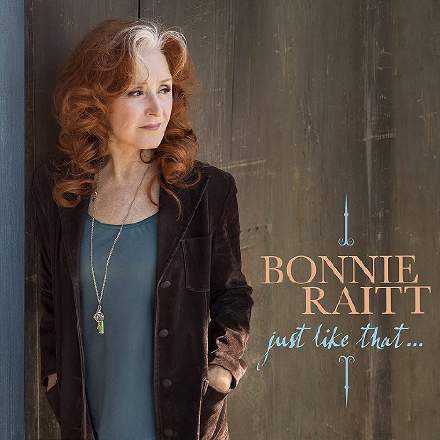
Probably the biggest surprise of this year’s Grammy Awards was this song winning Record Of The Year. Although I’ve generally liked Raitt’s music ever since 'I Can't Make You Love Me' first brought her to my attention, her latest album had yet to register on my radar, so I immediately made a bee-line for Spotify to find out what all the fuss was about. And honestly, I was a bit underwhelmed, mentally filing it under ‘well-weathered MOR Americana’ and losing patience after a minute or so. I had places to go, things to do, people to see, only so many hours in the day, etc, etc…
So, not for the first time, I find myself grateful for what can sometimes feel like a grindingly relentless content-creation task here at The Mix Review, because it has forced me to sit down and give this uniquely beguiling song a fair crack of the whip. Indeed, from a lyrical standpoint it’s a perfect example of what we streaming listeners all risk losing when we get too trigger-happy with the Skip button, because the central thematic reveal here only arrives at 2:41. (I won’t spoil it for you!) Furthermore, that crucial plot point only has any real impact once you’ve journeyed through everything that’s gone before it, and its full emotional payoff doesn’t land until even later, just after the three-minute mark. So my initial impatience very nearly cost me experiencing the most genuinely moving Grammy contender I’ve heard since Ingrid Andress’ 'More Hearts Than Mine'. Lesson learned…
The lyric’s only the tip of the iceberg here, though. The vocal performance is wonderful too, a world-weary paragon of emotional authenticity that’s undeniably intensified by Raitt’s proudly natural pitching, worn like a badge of honour. And the voice is given so much space in the arrangement by the autumnal warmth of guitar/bass sounds and pared-back kick-and-shaker beat – notice in particular the absence of any hi-hat, ride, or cymbals at all. But the highlight of the arrangement for me is Glenn Patscha’s achingly restrained Hammond organ, gently suffusing the timeline with the audio equivalent of dappled shade, only occasionally emerging into full view to suffuse crucial moments with the full glow of its harmonic sunshine.
Another wondrous facet of this production is its metric fluidity. Or, to explain myself perhaps a little less pretentiously: try counting along with this song. It’s a task that starts off pretty simple, given that the kick plays straight quarter notes, with the first three bars appearing to be in a bog-standard four-four metre. But at the end of the first vocal line ("…finally stopped at mine"), bar 4 suddenly gets truncated to two beats by a return of the clearly recognisable four-four guitar figuration first heard in bars 1 and 2. The same thing happens at the end of the second vocal phrase ("…like all he had was time"), although we only get a single bar of the guitar figuration there, and the third vocal phrase (ending “…the directions weren’t so clear”) follows a very similar template. But then we get what sounds like a three-beat bar under “I’m looking for Olivia Zand”, another four-beat instrumental vamp, and finally a two-beat bar for “they said I might find her here”.
In summary, that means I’m hearing the number of beats per bar from the start of the song until the end of the first verse as follows:
- 4+4 (instrumental)
- 4+2 (vocal: “I watched him circle round the block…”)
- 4+4 (instrumental)
- 4+2 (vocal: “Took a while before he knocked…”)
- 4 (instrumental)
- 4+2 (vocal: “Excuse me, Ma’am, maybe you can help…”)
- 4 (instrumental)
- 3 (vocal: “I’m looking for Olivia Zand”)
- 4 (instrumental)
- 2 (vocal: “They said I might find her here”)
Now, irrespective of whether you place notional bar lines in exactly the same places I do, I think we can all agree that there’s clearly no fixed time signature running through this music, and it’s an irregularity that I think plays a powerful role in making the storytelling feel so organically conversational, since the odd bar lengths seem to arise as a natural by-product of the vocal phrases themselves. The fact that it’s difficult to know when the next line of the lyric will arrive also underlines for me the narrator’s tentativeness and emotional uncertainty. It’s also fascinating the way the vocal phrases gradually shorten and/or get closer together as each verse progresses – it’s almost as if the melody is losing confidence in itself as it progresses!
The metric shenanigans don’t stop there, either – they’re all over the chorus and “na-na-naa naa naa” sections too. Moreover, subsequent iterations of each section are often varied subtly too. The third verse, for instance, only has one bar of instrumental after the first vocal phrase ("…and looked right in my face"), rather than the two bars we heard on previous occasions. By contrast, the second chorus adds an extra bar of instrumental at 3:11, giving the listener extra time to digest what is arguably the lead line’s most deeply-felt moment. And then there are the four “na-na-naa naa naa” sections that form the song’s outro, none of which are exactly identical: the tail of the second iteration is lengthened by seven beats at 4:06 with an echo of the chorus-section’s A-D cadence; the tail of the third iteration is shortened by a single beat; and the second phrase of the final iteration is lengthened by a couple of extra bars of G. And what makes Raitt’s persistent subversion of our metric expectations so impressive is that she manages to make it feel so transparently musical, without a whiff of contrivance.
I’ll admit I was as surprised as everyone else when I first heard about this song’s Grammy win. Not any more.










